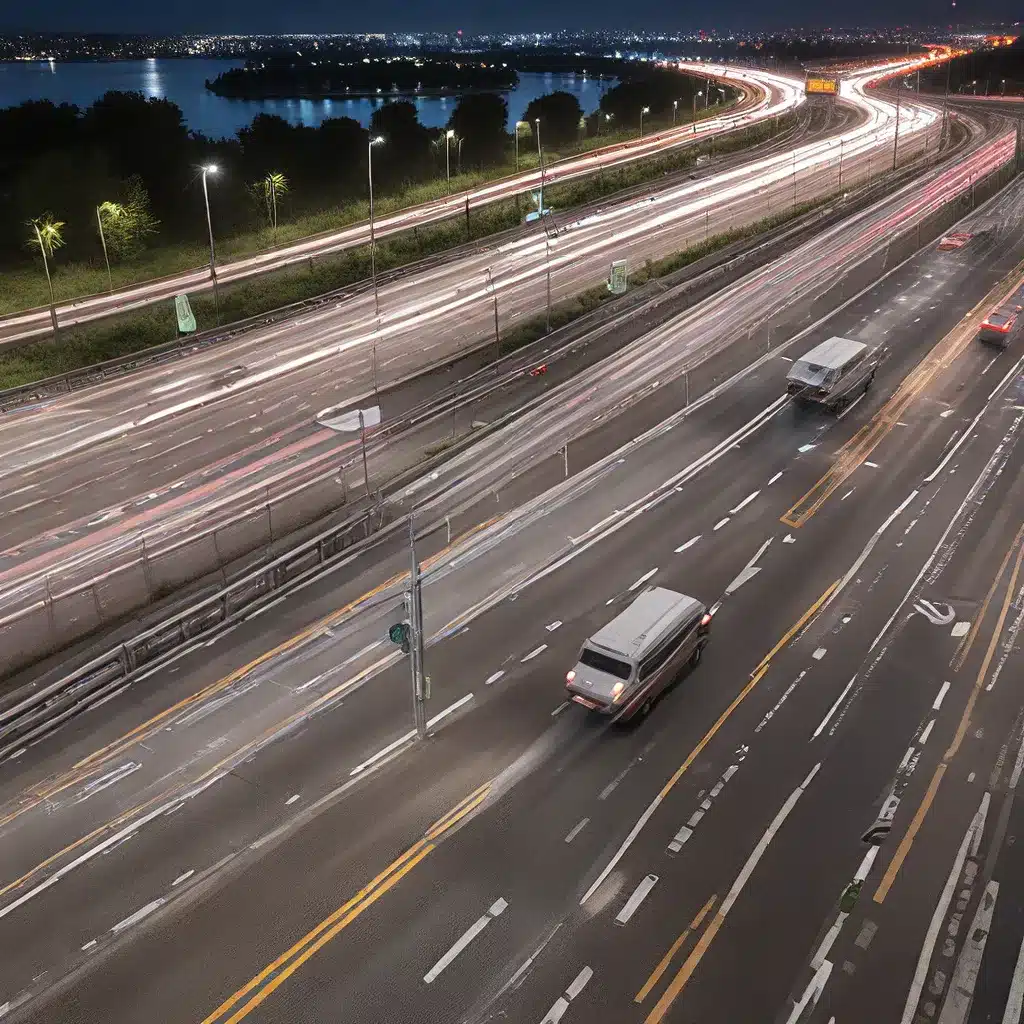
The Rise of Smart Mobility and Intelligent Transportation Systems
As the world becomes increasingly urbanized, the need for efficient and sustainable transportation solutions has never been more pressing. Intelligent Transportation Systems (ITS) have emerged as a critical component in addressing the challenges of modern urban mobility, leveraging cutting-edge sensor technologies, data analytics, and communication networks to enhance safety, reduce congestion, and improve overall transportation experiences.
At the forefront of this transformation is the concept of Smart Mobility, a holistic approach that integrates various transportation modes, including connected and automated vehicles, public transit, and shared mobility services. By harnessing the power of sensor-enabled technologies, Smart Mobility aims to create a more seamless, efficient, and user-centric transportation ecosystem, revolutionizing the way people and goods move within and between cities.
Sensor Networks at the Heart of ITS
At the core of Intelligent Transportation Systems lie extensive sensor networks, which serve as the foundational infrastructure for gathering real-time data from a variety of sources. These sensor networks are strategically deployed across urban environments, monitoring traffic flows, road conditions, environmental factors, and the movement of vehicles, pedestrians, and cyclists.
Intelligent Transportation Systems (ITS) technologies leverage an array of sensors, including loop detectors, cameras, radar, and GPS-enabled devices, to collect a comprehensive set of data points. This data is then processed and analyzed using advanced AI-powered edge computing and cloud-based analytics, enabling transportation authorities to make informed decisions and implement adaptive traffic management strategies.
Enhancing Road Safety with Sensor-Enabled ITS
One of the primary applications of sensor-enabled ITS is the enhancement of road safety. By integrating connected vehicle technologies, such as vehicle-to-vehicle (V2V) and vehicle-to-infrastructure (V2I) communication, ITS can provide drivers with advanced warning systems and real-time information about potential hazards, weather conditions, and traffic incidents.
The University of Tennessee at Chattanooga’s Center for Urban Informatics and Progress (CUIP) has been at the forefront of research and development in connected and autonomous vehicles, providing a comprehensive testing environment for exploring these safety-enhancing technologies. Through specialized vehicle platforms and a citywide smart city testbed, CUIP researchers are advancing the capabilities of C-V2X (Cellular Vehicle-to-Everything) communication, radar, lidar, and camera-based systems to mitigate the risks faced by vulnerable road users, such as pedestrians and cyclists.
Optimizing Traffic Flow and Enhancing Mobility
In addition to improving road safety, sensor-enabled ITS plays a crucial role in optimizing traffic flow and enhancing overall mobility within urban environments. Traffic Signal Optimization algorithms leverage real-time data from sensor networks to adjust signal timing and coordination, reducing delays, and improving the efficiency of traffic movement.
Furthermore, multimodal transportation systems that integrate various modes of travel, such as buses, trains, bicycles, and ride-sharing services, are becoming increasingly prominent in Smart Mobility initiatives. By utilizing sensor data and advanced analytics, transportation authorities can optimize route planning, service frequency, and accessibility, making public transit a more attractive and viable option for daily commuters.
Advancing Sustainability and Energy Efficiency
As the world strives towards greater sustainability and the reduction of carbon emissions, the intersection of transportation and energy management has become a crucial focus area for ITS advancements. The rise of Electric Vehicles (EVs) has been a significant driver in this transformation, with sensor networks playing a vital role in the deployment and management of smart charging infrastructure.
Vehicle-to-Grid (V2G) technology, enabled by sensor-based systems, allows EVs to return excess electricity to the grid during peak demand periods, while Grid-to-Vehicle (G2V) ensures optimal charging during off-peak times, promoting energy stability and reducing costs. These advancements, coupled with the integration of smart grid technologies, are essential in supporting the widespread adoption of EVs and achieving global sustainability goals.
Securing Sensor-Enabled ITS
As Intelligent Transportation Systems become increasingly reliant on sensor networks and digital technologies, the importance of cybersecurity has come to the forefront. Malicious actors could potentially exploit vulnerabilities in connected infrastructure and vehicle-to-everything (V2X) communications, posing threats to the safety and reliability of ITS.
To address these concerns, researchers and industry leaders are actively exploring secure sensor network architectures, encryption protocols, and anomaly detection algorithms to safeguard ITS against cyber threats. Initiatives like the Chattanooga Smart Community Collaborative, led by the University of Tennessee at Chattanooga, are at the forefront of developing secure and resilient digital infrastructure for smart city applications.
The Future of Sensor-Enabled ITS
As the world continues to urbanize and the demand for efficient, sustainable, and safe transportation solutions grows, the role of sensor-enabled Intelligent Transportation Systems will become increasingly critical. Through the integration of advanced sensing technologies, data analytics, connected vehicle systems, and energy management strategies, ITS are poised to revolutionize the way we move and interact with our urban environments.
The future of sensor-enabled ITS holds the promise of seamless multimodal transportation, autonomous vehicle technologies, and adaptive traffic management that can respond in real-time to changing conditions. By leveraging the power of sensor networks and data-driven decision-making, cities can pave the way for a more sustainable, efficient, and equitable transportation ecosystem, enhancing the quality of life for all residents.
The team at sensor-networks.org is dedicated to exploring the latest advancements and innovations in this rapidly evolving field. We invite you to stay informed and engaged as we continue to unravel the transformative potential of sensor-enabled Intelligent Transportation Systems.